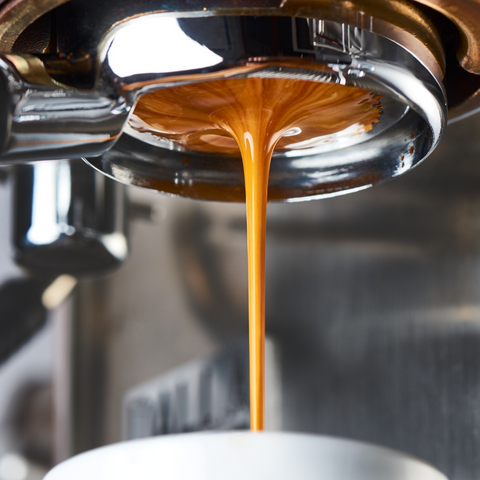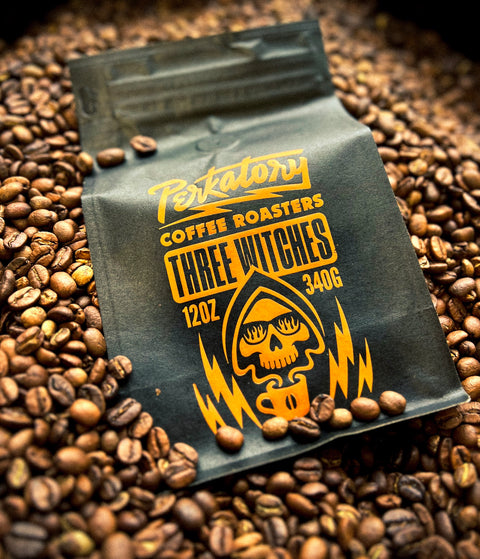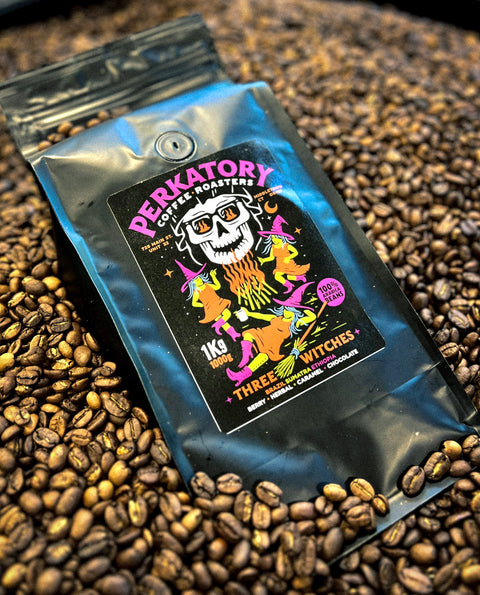For the passionate home barista, making the perfect espresso is an enduring quest. There are the grind size, tamping pressure, and the age of the coffee to consider, but one often underestimated champion in this ballet of barista skills is temperature. When it comes to espresso, temperature is not just a matter of personal preference; it's the hinge on which flavor, extraction, and even the very character of the espresso turns. In this blog post, we will explore the intricate relationship between temperature and espresso, helping you refine your craft and enjoy a richer cup every morning.
The Science Behind Espresso Extraction
Before we can even begin to understand espresso temperature, we must peel back the layers of the extraction process. Espresso extraction is a delicate act of dissolving the coffee solubles into a beverage. The very essence of espresso is to create a concentrated flavor profile from a finer grind of coffee that's exposed to hot water for a shorter time compared to drip coffee methods. The process involves three key phases.
Pre-Infusion
In this initial stage, the puck of coffee grounds is saturated with hot water, allowing the coffee to bloom and release CO2, encouraging even extraction.
The Main Extraction
Water is forced through the puck at significant pressure (usually 9 bars), extracting the coffee solubles in a quick, controlled burst.
The Final Push
The final phase flushes the puck for a second to ensure all desirable solubles have been extracted without risking over-extraction or bitterness.
The Impact of Temperature on Extraction
Temperature's effect on extraction is profound. It can influence the rate at which the coffee is dissolved, leading to over or under-extraction if not carefully controlled. Similarly, temperature can alter the solubility of various flavors—bitter compounds require higher temperatures to extract than sweet compounds, which means the wrong temperature can throw off the flavor profile entirely.
Too Cool for School
An espresso machine that doesn't reach optimum temperature risks leading to under-extraction. Under the ideal heat, the solids in the coffee fail to break down, leading to a bland and underdeveloped taste.
Over the Edge
Equally dangerous is an overheated brew. High temperatures can quickly over-extract coffee, leading to bitterness and a burnt taste. The increased solubility at these temperatures also means more oils—usually responsible for body and mouthfeel—find their way into the coffee, creating a heavier, less balanced espresso.
Finding the Sweet Spot
The 'ideal' temperature for brewing espresso is often fixed around 195–205°F (90–96°C). This range ensures that the coffee is extracted efficiently without becoming either under or over-extracted. But in the pursuit of perfection, it's important to note that this range is a guide, not gospel. Different kinds of coffee can have their ideal extraction points, and some coffee's profiles may shine even at slightly lower or higher temperatures. Seasoned baristas often adjust for temperature based on the roast—lighter roasts might benefit from a cooler temperature to avoid burning the subtle flavors, while darker roasts can be more robust and stand up to higher heat.
Precision Brewing
Home espresso machines vary widely in their temperature consistency. Some home machines will need time for the boiler or the group head to recover after each shot. If consistency is key, a temperature-controlled espresso machine is a worthy investment. These machines maintain the ideal temperature with utmost precision, shot after shot.
Monitoring Madness
For those with a less complex setup, investing in a good digital thermometer can significantly improve consistency. Before each brew, test the water temperature at the group head to ensure it's in the sweet spot, and make necessary adjustments, if possible, to the heating process on your machine.
Navigating the Nuances of Temperature Fluctuations
The ballet of brewing a sublime espresso doesn't end with finding that sweet spot on the thermometer; it extends into the realm of mitigating temperature fluctuations that can turn a promising pour into a mediocre sip. These fluctuations are more common and impactful than many might assume, acting as silent saboteurs in the brew process. Each variable in the coffee-making process—from the amount of coffee used to the pressure applied—can influence temperature, which in turn, subtly alters the flavor profile of the final cup.
Temperature stability is, therefore, not just desirable but essential. Slight deviations from the optimum range can coax out unwanted bitterness or leave behind the nuanced flavors that give a blend its character. This demands not only a watchful eye but an understanding of how brewing conditions interact with temperature. For example, the ambient temperature of the room, the temperature of the portafilter, and even the coffee mug itself can introduce variability.
Understanding and controlling for temperature variances require a blend of science and art, inviting the barista to engage deeply with their craft. Learning to recognize and respond to these fluctuations underscores the commitment to excellence and the relentless pursuit of the perfect espresso. Indeed, this nuanced battle with temperature not only challenges but enriches the coffee-making experience, offering each barista a unique path to mastery.
Achieving Consistency in Every Cup
Achieving consistency in espresso brewing is a fusion of method, precision, and adaptability. Here are some tips to help refine your practice and produce a consistently excellent cup every time.
- Weigh Your Inputs: Start by weighing your coffee grounds and water. The golden ratio in espresso brewing leans towards using approximately 18 grams of coffee for every 36 grams of extracted beverage. This balance is crucial for maintaining consistency.
- Grind With Care: The granularity of your coffee affects extraction; too fine, and you risk over-extraction, too coarse, and under-extraction becomes your adversary. A burr grinder allows for a more consistent grind size and thus, a more controlled brewing process.
- Temperature Control: As discussed, temperature exerts significant influence over your espresso's flavor profile. Using machines that allow for temperature adjustments can empower you to fine-tune your brew to your bean’s unique characteristics.
- Tamp Evenly: The pressure you apply when tamping down your grounds should be consistent from brew to brew. An even tamp ensures even water distribution through the coffee, preventing channeling and promoting a balanced extraction.
- Monitor Your Machine: Regular maintenance of your espresso machine can prevent unexpected variances. Lime scale build-up or worn gaskets can impact your machine's performance, so keeping it clean and serviced is key.
- Record and Reflect: Keep a brewing journal. Note the bean type, grind size, water temperature, extraction time, and taste notes for each brew. This documentation can guide your adjustments and help you understand your preferences deeply.
- Taste Regularly: Developing a palate for espresso takes time and practice. Tasting your brews attentively, adjusting variables, and understanding the outcome helps in achieving not just consistency but also excellence in every cup.
The mastery of espresso brewing is a rewarding endeavor layered with complexity. Each cup offers a moment of reflection, an opportunity to engage with the process, and the joy of savoring the result. It is, inherently, a pursuit of balance—between science and art, precision and intuition.
Closing Thoughts on Control
In essence, temperature control in espresso brewing is about finding balance. Like a conductor with an orchestra, the barista aims to manage the variables of time and temperature to ensure each shot is symphonic. Too much heat and you've ruined the melody; too little and the orchestra falls flat.
The next time you pull a shot, consider the temperature not as a simple number to dial in on your machine but as a vessel to control the flavor. Every tweak toward the perfect temperature is a stride toward the subtle balance and vibrant taste that make espresso such an exquisite art form.
Armed with this understanding, take a bold step in perfecting your espresso craft. Experiment with different temperatures, and don't hesitate to taste and adjust. It's from these meticulous practices that we can transform a simple morning routine into a daily celebration of aroma, body, and flavor—the essence of great espresso.



